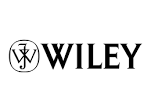Resource information
Investigations were made of plant and soil responses to severe degradation through heavy grazing and browsing in arid, succulent, subtropical thicket. Severe degradation of thicket is of major concern in terms of threatened biodiversity, unsustainable utilization and collapse of other ecosystem services. We used a natural, field contrast, case‐study approach, sampling within plots under lightly and heavily stocked conditions. Mean plant species diversity and richness did not change significantly at sample plot level although there was a 27 per cent decline in richness with degradation at the scale of the study site. On degraded plots, there was a high species turnover and high beta diversity, which created a replacement zone rather than an impoverished zone. Replacement species were confirmed as mainly, but not exclusively, weedy annual grasses and alien forbs. The few persisting perennials were small trees that survived above the browse line, and hardy shrub species. Perennial persisting and replacement species below the browse line may suggest potential candidates for restoration. Nitrogen was the only measured nutrient that showed a significant decrease with degradation. Phosphorous, potassium and magnesium increased significantly, with the first two mentioned reaching potentially excessive levels. Soil salinization occurred with an order of magnitude increase in sodium. Thus, the increased cation exchange capacity occurred together with development of a nutrient imbalance. The elevation in some nutrients and soluble salts is ascribed to wind‐determined directional grazing that concentrate livestock in the degraded area. The implications of the above altered soil conditions for thicket restoration need to be further explored. Copyright © 2012 John Wiley & Sons, Ltd.



